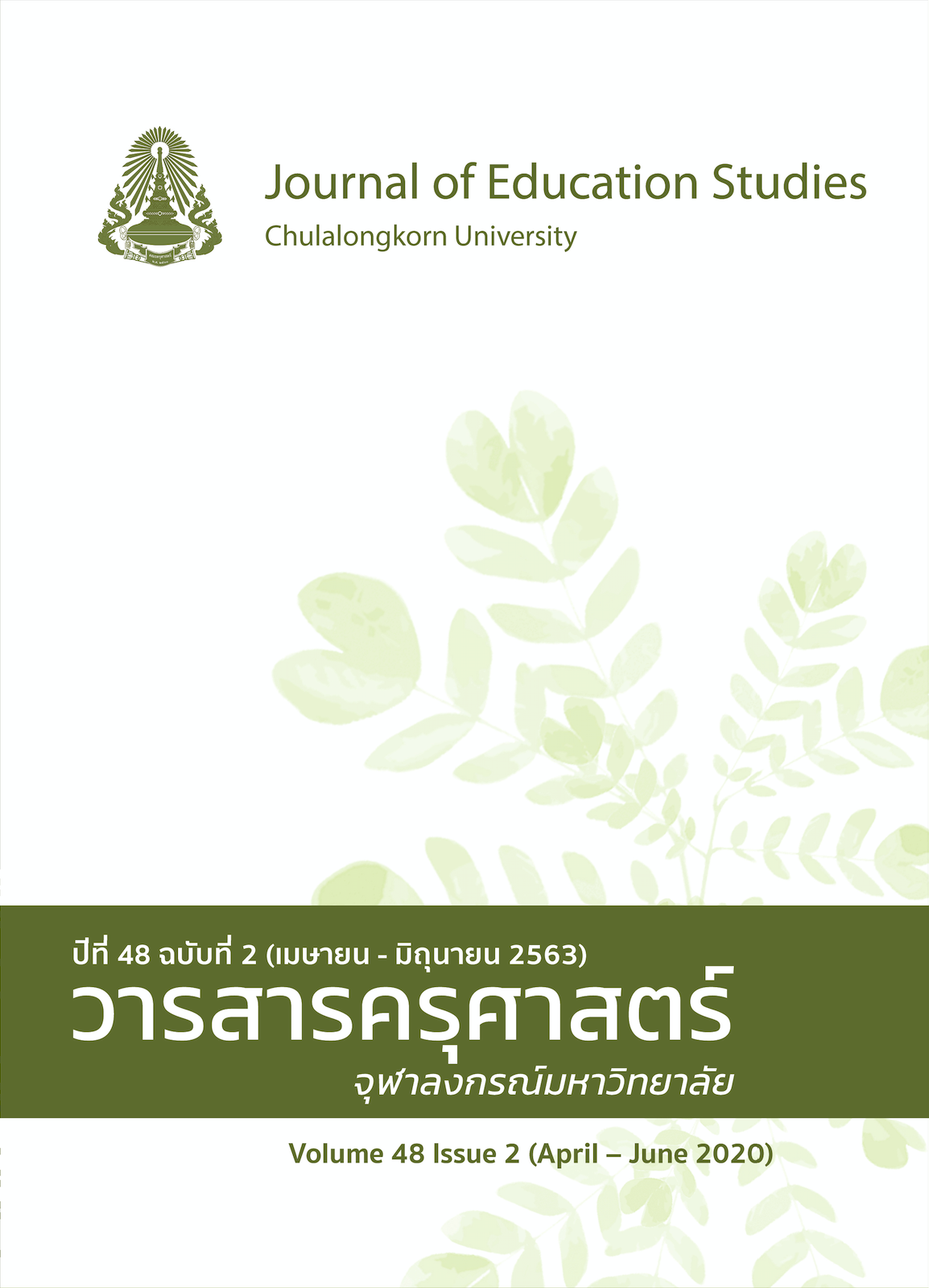Recommendations for Teaching Physical Education, Training and Competing Sports in Hot Ambient Condition
Keywords:
teaching, physical education, sport training, sport competition, hot weatherAbstract
Physical education can form a valuable part of children’s and young player’s experiences of growing up, fitting into society and becoming responsible citizens. It provides valuable opportunities for learning about responsibility, democratic principles and citizenship through the ways in which it provides real experiences engaging the whole person physically, emotionally, socially and intellectually. In addition, children and young players need to make moral judgments about right and wrong and learn to get along with others, deal with success and failure, and experience a large range of learning arising from real experience.
Thailand is located on the tropical climate area, therefore, teaching physical education, training and sport competition are inevitably proceeded in that ambient condition. While exercising or playing sport in hot weather, body will physiologically respond and adapt its cardiovascular system by ventilating heat and sweating. These physiological strains may lead to dehydration, decreasing of plasma volume, failure of cardiovascular system and increasing of body core temperature, as well as bringing about the heat-related illnesses, such as heat edema, heat rash or prickly heat, dehydration, fever or pyrexia, heat syncope or fainting, heat cramp, heat exhaustion and heat stroke.
Schools, educational institutions and related stakeholders which the obligation to conduct physical education, sport training and competition must focus and prepare for these dangers and health-affected issue by establishing related-measures and proper emergency action plan for participants’ safety, provision of safe facilities, physical activity time modification, rest and fluid break scheduling, environmental assessment, participants’ health information and heat tolerance factors education, sport competition measures establishment for instance.
References
ฉัตรชาติไชย ปิตยานนท์. (2552). การศึกษาสภาพอากาศ อุณหภูมิร่างกายและการตอบสนองทางระบบหัวใจและหลอดเลือดในระหว่างการออกกำลังกายกลางแจ้งในชั่วโมงพลศึกษาของเด็กนักเรียนชายโรงเรียนสาธิตจุฬาลงกรณ์มหาวิทยาลัย ฝ่ายประถม [วิทยานิพนธ์ปริญญามหาบัณฑิต ไม่ได้ตีพิมพ์]. จุฬาลงกรณ์มหาวิทยาลัย.
ทัศน์พงษ์ ตันติปัญจพร. (2562). ความร้อน: ผลกระทบต่อสขุภาพการตรวจวดัชนีค่ามาตรฐานและการปรับตัวให้ทนกับสภาพความร้อน. วารสารความปลอดภัยและสุขภาพ, 11(3), 1-16.
นพมาศ สะพู. (2556). โรคร้อน ก่อโรคร้าย. วารสารกรมวิทยาศาสตร์บริการ, 61(193), 32-35.
สถานีโทรทัศน์ไทย PBS. (2562, 1 ตุลาคม). "นาซา" เตือนโลกอยู่ในช่วงครึ่งทศวรรษร้อนที่สุดรอบ 120 ปี [ข่าวสิ่งแวดล้อม]. Thai PBS. https://news.thaipbs.or.th/content/284750
สุรเชษฐ์ วิศวธีรานนท์. (2561, 26 มกราคม). ตัวชี้วัดคุณภาพอากาศและการจัดการเรียนการสอนวิชาพลศึกษา [รูปภาพประกอบข้อความแจ้งผู้ปกครอง]. กลุ่มสาระฯ สุขศึกษาและพลศึกษา สาธิตจุฬาฯประถม. https://www.facebook.com/PE.SatitChula
ภาษาอังกฤษ
American Academy of Pediatrics, Council on Sports Medicine and Fitness. (2000). Climatic
heat stress and the exercising children and adolescents. Pediatrics, 106, 158-159.
Armstrong, L. E., Epstein, Y., Greenleaf, J. E., Haymes, E. M., Hubbard, R. W., Roberts, W. O., & Thompson, P. D. (1996). Heat and cold illnesses during distance running. Medicine & Science in Sports & Exercise, 28, 39-60.
Bailey, R. (2006). Physical education and sport in schools: A review of benefits and outcomes. Journal of School Health, 76(8), 397-401.
Bernard, T. E. (1996). Risk management for preventing heat illness in athletes. Athletic Therapy Today, 1(4), 19-21.
Binkley, H. M., Beckett, J., Casa, D. J., Kleiner, D. M., & Plummer, P. E. (2002). National athletic trainers’ association position statement: exertional heat illnesses. Journal of Athletic. Training, 37(3), 329-343.
Coris, E. E., Ramirez, A. M., Van, & Durme, D. J. (2004). Heat illness in athletes: The dangerous combination of heat, humidity and exercise. Journal of Sports Medicine, 34, 9-16.
Ely, M. R., Cheuvront, S. N., Roberts, W. O., & Montain, S. J. (2007). Impact of weather on marathon-running performance. Medicine & Science in Sports & Exercise, 39(3), 487–493.
Hatori, Y. (2013). Heat stroke in schools. Japan Medical Association Journal, 56(3), 179-185.
Howe, A. S., & Boden, B. P. (2007). Heat-related illness in athletes. The American Journal of Sports Medicine, 35(8), 1384-1395.
Kerr, Y., Casa, J., Marshall, W., & Comstock, D. (2013). Epidemiology of exertional heat illness among U.S. high school athletes. American Journal of Preventive Medicine, 44(1), 8-14.
Light, R. (2013). Game Sense: Pedagogy for performance, participation and enjoyment. Routledge.
McArdle, W. D., Katch, F. I. & Katch, V. L. (2006). Essential of exercise physiology: Factors affecting physiologic function: The environment and special aids to performance (3rd ed.). Lippincott Williams & Wilkins.
Morgan, P., & Bourke, S. (2008). Non-specialist teachers’ confidence to teach PE: The nature and influence of personal school experiences in PE. Physical Education and Sport Pedagogy, 13(1), 1–29.
Maughan, R. J., & Shirreffs, S. M. (2004). Rehydration and recovery after exercise Réhydratation et recupération après exercice. Science & Sports, 19(5), 234-238.
Murray, B. (2007). Hydration and physical performance. Journal of the American College of Nutrition, 26, 542S-548S.
Nassis, G. P., Brito, J., Dvorak, J., Chalabi, H., & Racinais, S. (2015). The association of environmental heat stress with performance: analysis of the 2014 FIFA World Cup Brazil. British Journal of Sports Medicine, 49(9), 609-613.
Nelson, N. G., Alhajj, M., Yard, E., Comstock, D., & McKenzie, L. B. (2009). Physical education class injuries treated in emergency departments in the U.S. in 1997-2007. Pediatrics, 124(3), 918-925.
Racinais, S., Alonso, J. M., Coutts, A. J., Flouris, D., Girard, O., González-Alonso, J., Hausswirth, C., Jay, O., Lee, J. K. W., Mitchell, N., Nassis, G. P., Nybo, L., Pluim, B. M., Roelands, B., Sawka, M. N., Wingo, J. E., & Périard, J. D. (2015). Consensus recommendations on training and competing in the heat. Scandinavian Journal of Medicine & Science in Sports, 25, 6-19.
Somboonwong, J. (2014). Heat illness: Health concerns for school physical education. In Todaro R (Ed.), Handbook of physical education research (pp. 473-499). Nova Science.
Somboonwong, J., Sanguanrungsirikul, S., & Pitayanon, C. (2012). Heat illness surveillance in
schoolboys participating in physical education class in tropical climate: An analytical
prospective descriptive study. British Medical Journal Open, e000741, 1-7. http://dx.doi.org/10.1136/bmjopen-2011-000741
United Nation Education, Scientific and Cultural Organization. (2015). Quality physical education (QPE): Guideline for policy maker. https://en.unesco.org/inclusivepolicylab/sites/default/files/learning/document/2017/1/231101E.pdf




